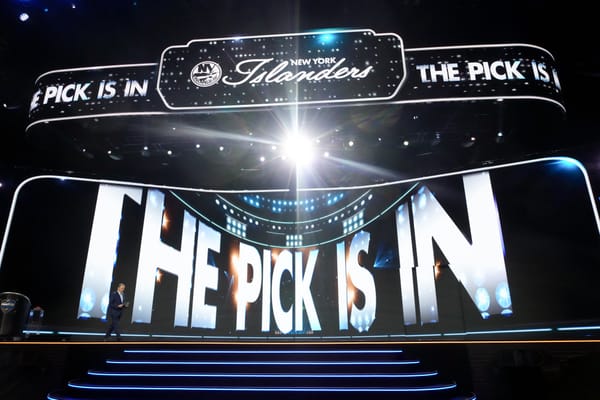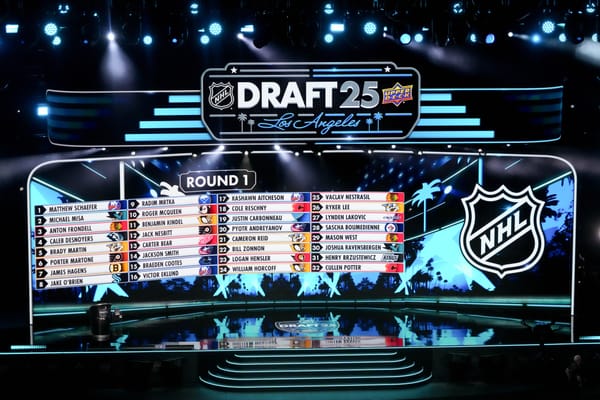Crunching The NYR Salary Cap
A look at the Rangers’ summer in the eyes of the salary cap
Author’s note: The salary cap for 2016-17 for each NHL team was precisely $73 million. Depending on revenue, my approximation for the 2017-18 salary cap would be anywhere from $72 to $76 million. The new salary cap figure, based on NHL revenue, will be announced sometime next month, most likely late June.
With the Rangers’ 2016-17 campaign supplanted all-too-early in the history books, it’s time (like it or not) to look ahead to the 2017 off-season. For New York, it represents a myriad of choices and possibilities, all of which will doubtlessly be explored here on BlueshirtBanter.
But for now, we’ll just take a look at a few things from a salary cap perspective:
On the surface, it might appear to be a simple situation: with seven defensemen and two goaltenders under contract for next season, the only moving pieces are a handful of forwards to re-sign, with anywhere from $8 to $12 million in cap space to accommodate. Open and shut, eh?
Probably not.
For one thing, if there are serious changes to be made in the department of defense, it will require salary shedding (particularly re-signing Brendan Smith, or landing impending free agent Kevin Shattenkirk). The frank discussion is mainly to what degree would Jeff Gorton be willing to eat salary, or live with dead cap hit, as a means of ousting Dan Girardi and/or Marc Staal.
That’s not to say it be unfathomable for New York to create such blue line cap space by shrinking the forward payroll, either. But lest we forget: Mika Zibanejad is coming off a fantastic year (albeit with some missed games due to a broken leg), is eligible for salary arbitration, and is a prime candidate for a long-term deal with a substantial raise in pay.
In fact all of the impending restricted free agents pictured above are eligible for salary arbitration, meaning as far as roster players go, New York is in literally no position to lowball the RFAs into stingy deals, as we’ve seen time and time again.
So without incorporating anything else, and just proposing these three [ideal?] new contracts, you can see the Rangers’ 2017-18 payroll would be incredibly above capacity:
In this event, the team would need to cut anywhere from $7 to $12 million, and that’s without getting into the other impending free agents like Jesper Fast or Oscar Lindberg. It’s hard to imagine Broadway executing multiple buyouts, but buying out one of Girardi/Staal would shave the total cap figure down by $2.9 to $3.6 million for 2017-18. If not multiple buyouts, a salary-dump via trading a large, currently-existing contract in Rick Nash or Derek Stepan comes to mind.
It’s probably worth noting Stepan has a full No-Trade-Clause that kicks in on July 1st of this summer, as well as Nash having a partial NTC where he lists only 10 NHL teams to which he can be traded. Girardi and Staal have full No-Movement-Clauses, but Girardi has a superseding partial-NTC kicking in July 1st, where he can be traded to 15 teams.
Ultimately, in lieu of multiple buyouts, and despite some anti-mobility clauses; packaging one of Girardi/Staal with one of Nash/Stepan seems to be a realistic means of shedding salary.
Again, this is less a referendum on their on-ice value, and more a payroll issue of affording a hypothetical revamping of the defense.
So, to build upon the hypothetical signings of Smith, Shattenkirk & Zibanejad, let’s add in a hypothetical Staal buyout, coupled with some sort of trade where Nash is packaged with Girardi, where New York inevitably has to eat salary in order to free up lots of it:
Buyouts will also be telling of the team’s short-term philosophy. In either buyout, the cap relief is best in the immediate season (2017-18), but declines in relative yearly savings thereafter.
But I digress:
This is a crude, simplistic measurement for sure, but the point is clear. In order to dig out of a [bad contract] hole this summer, teams usually have to get a little dirty. Procuring two of the better unrestricted free agent defensemen in Shattenkirk and Smith, as well as locking up Zibanejad to long-term paper can be done... but it will be costly. However, given the above example, the Rangers have enough room to tie up the “bottom” four or five forwards to contracts, and still come in under $75 million cap hit total.
Mind you this does not even touch how the NHL Expansion Draft next month will play into offseason moves; I’ll save that article for a little later. But for a sneak peak as to how the Rangers could potentially convert the Vegas Inception to their advantage, here’s an excerpt to the article I wrote last week regarding how teams in general may respond:
Everybody has garbage and everybody wants to be able to dispose of their garbage when too much of it accumulates. Well, it turns out NHL franchises are a lot like suburban households. Look no further than the 2013 and 2014 amnesty buyouts, which were designed to relieve teams of a fluctuating salary cap during a teetering collective bargaining agreement (or there lack of)... but ultimately ended up bailing out some teams that would have executed those same amnesty buyouts even if there were no cap at all!
In this case, Vegas may very well represent a softer reincarnation of amnesty buyouts.
Teams giving Vegas futures to absorb “bad” contracts, whether it be in the expansion draft or through independent trade at a different point, is very much possible. It would fit with a build-up mentality, as well as relieve cap-strapped teams of burden (and many cap-strapped teams are of the mindset of cup contention, thus are usually the ones most willing to part with draft picks & prospects for sustainability).
To reiterate, there are an infinite amount of transactions the Rangers could make this off-season, corresponding to various market dynamics, guided by who-knows-what the front office thinks is a good idea. The main takeaway here should be that the team likely has to engineer some creative, if not painful, means to shed salary if they want to retool the blue line for a go at the 2018 postseason.




